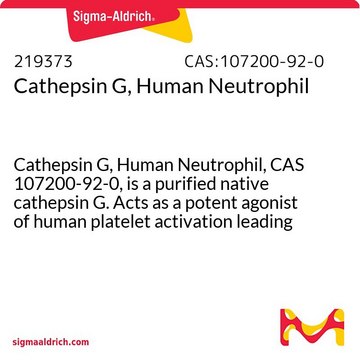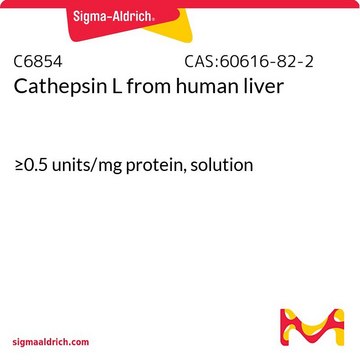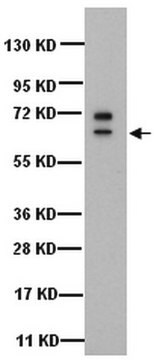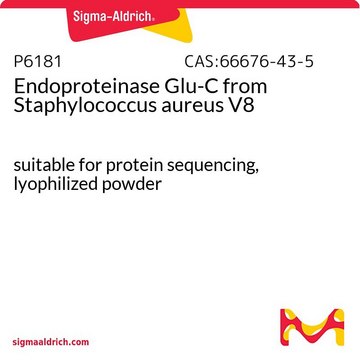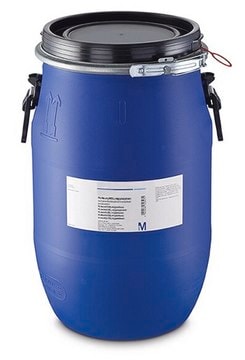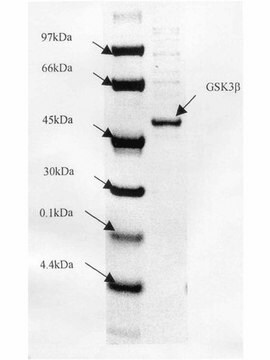219402
Cathepsin L, Human Liver
Cathepsin L, Human Liver, CAS 60616-82-2, is a native, the most potent of all the lysosomal proteinases. Plays a major role in the proteolysis of both cellular and endocytosed macromolecules.
Sinonimo/i:
CTSL, CTSL1, Human Cathepsin L, Major excreted protein (MEP)
About This Item
Prodotti consigliati
Origine biologica
human liver
Livello qualitativo
Stato
liquid
Produttore/marchio commerciale
Calbiochem®
Condizioni di stoccaggio
OK to freeze
avoid repeated freeze/thaw cycles
tecniche
activity assay: suitable
Compatibilità
suitable for molecular biology
applicazioni
life science and biopharma
Condizioni di spedizione
wet ice
Temperatura di conservazione
−70°C
Informazioni sul gene
human ... CTSL(1514)
Descrizione generale
Cathepsin L, Human Liver, native, is the most potent of all the lysosomal proteinases. Cathepsin L (CTSL) belongs to the papain subfamily of cysteine proteases and is mainly located in endolysosomal vesicles.
Azioni biochim/fisiol
Confezionamento
Attenzione
Definizione di unità
Stato fisico
Nota sulla preparazione
Ricostituzione
Altre note
Note legali
Codice della classe di stoccaggio
12 - Non Combustible Liquids
Classe di pericolosità dell'acqua (WGK)
WGK 2
Certificati d'analisi (COA)
Cerca il Certificati d'analisi (COA) digitando il numero di lotto/batch corrispondente. I numeri di lotto o di batch sono stampati sull'etichetta dei prodotti dopo la parola ‘Lotto’ o ‘Batch’.
Possiedi già questo prodotto?
I documenti relativi ai prodotti acquistati recentemente sono disponibili nell’Archivio dei documenti.
Il team dei nostri ricercatori vanta grande esperienza in tutte le aree della ricerca quali Life Science, scienza dei materiali, sintesi chimica, cromatografia, discipline analitiche, ecc..
Contatta l'Assistenza Tecnica.